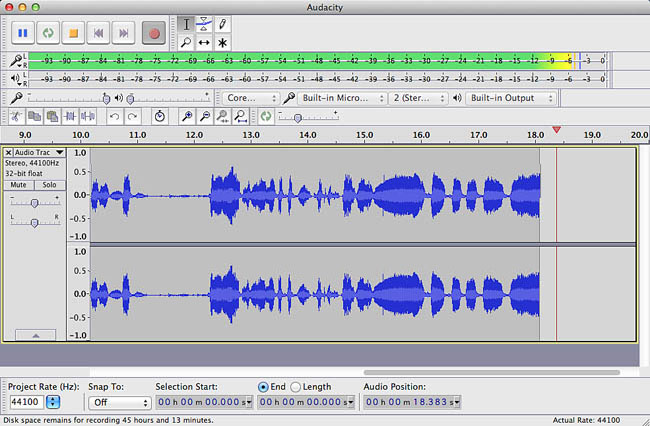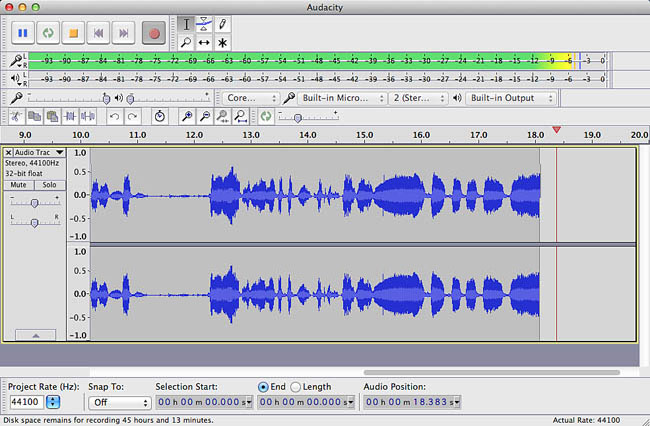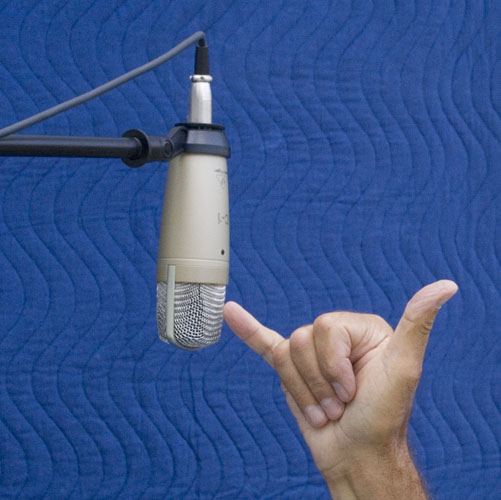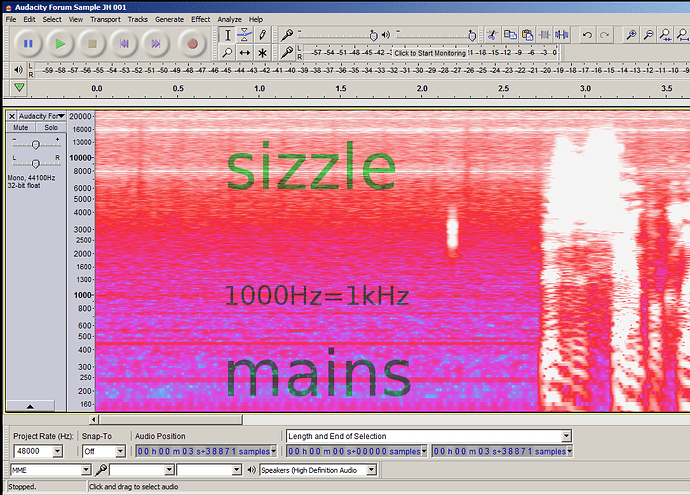Hello all. ![]()
Like the subject says, I’m brand new to audio recording/editing and thus, to Audacity (which is an awesome program that I will help support when financially able.) Software devs and their fams need to eat, yeah?
My sole purpose for using Audacity is going to be to record my own voice for voiceover/voice talent work. I’ve been told for years, about once a month or so, that I have a great voice. I’ve never had any formal voice training, per se, but I have been going to the Philip Morris University, Marlboro School for a long time. As I’m closer to 50 years old than 40, I reckon it’s kind of now or never if I want to attempt making some supplemental income utilizing my voice.
The platform I’m currently on is a Win 7 x64 SP1 desktop with a mobo-onboard VIA Envy HD chip. I have v.2.3.0 of Audacity installed. I have a pair of Turtle Beach X12 headphones with a boom mic. So, that is a USB-powered, front-panel 3.5mm audio separate mic input & headphone output plug setup.
When I talk with people via TeamSpeak3 or Discord, they tell me I come through “five by five” or loud & clear, as if I were sitting next to them or on a very clear phone call, with just a bit of background noise. I’ve obviously played with the settings in these two apps to make the outbound and inbound audio sound as clear as possible, with my sound-chip and Win 7 native settings staying at the 50% level.
I’ve tried a few sample recordings with Audacity, exporting them with LAME to .mp3. The volume is maybe half of what I (and others) can hear in TS/Discord, and I can hear some hiss in the background. One of the gents I regularly talk to on TS says he is a TV technician (as in, he works in-studio) and does some successful voice work on the side, using a Rode Podcaster mic, which he strongly advocated I think about purchasing, if I were to be serious about doing voice work. He asked me to send him a raw .wav sample of me speaking and then some silence. That was just about a month ago. He is apparently very busy and hasn’t been able to get around to helping me null-out the 60Hz mains and ambient noise by using notch filters? Is that the right term?
So, I suppose the purpose of this post is to get some general (and perhaps specific) info about where I should think about putting my sound chip and Audacity settings.
And also, I guess I should post a .wav sound sample of nothing but ambient noise?
I almost forgot. Is there an official/semi-official TS or Discord server where real-time advice is available?
I really appreciate any and all help/advice y’all can give to a noob scrub! ![]()
-JH








